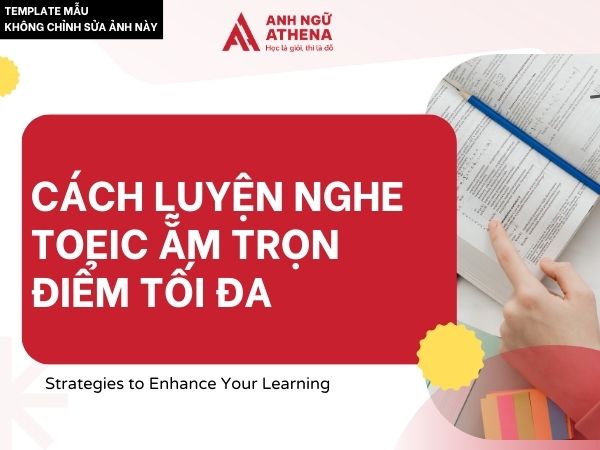Bài mẫu chi tiết và Từ vựng đề Speaking Part 3 Cambridge 18 Test 2 chủ đề MUSEUM AND ART GALLERIES và THE HOLIDAY INDUSTRY bạn không nên bỏ lỡ.

- What are the most popular museums and art galleries in …/where you live?
- Do you believe that all museums and art galleries should be free?
- What kinds of things make a museum or art gallery an interesting place to visit?
- Why, do you think, do some people book package holidays rather than traveling independently?
- Would you say that large numbers of tourists cause problems for local people?
- What sort of impact can large holiday resorts have on the environment?
What are the most popular museums and art galleries in …/where you live?
Well, since Vietnam boasts a rich cultural heritage, it came as no surprise that we have a number of impressive museums and art galleries. Some of the most popular include the Vietnam National Museum of History in Hanoi, which is home to a vast collection of artifacts tracing Vietnam's history from prehistoric eras to the present day.
Another prominent one is the Ho Chi Minh Museum, which also happens to be in Hanoi, dedicated to the life and work of Vietnam's beloved leader. For art enthusiasts, the Fine Arts Museum in Ho Chi Minh City is a must-visit, showcasing a diverse range of Vietnamese art, from traditional to contemporary pieces.
- cultural heritage /ˈkʌlʧᵊrᵊl ˈhɛrɪtɪʤ/ (n): di sản văn hóa
- artifacts /ˈɑːtɪˌfækts/ (n): cổ vật
- prehistoric era /ˌpriːhɪˈstɒrɪk ˈɪərə/ (n): thời kỳ tiền sử
- art enthusiast /ɑːt ɪnˈθjuːziæst/ (n): người hâm mộ nghệ thuật
Do you believe that all museums and art galleries should be free?
On the one hand, I think it would be fantastic if all museums and art galleries charged cost-free to the public. It would undoubtedly increase accessibility to culture and education for everyone, regardless of their financial situation. Art and history are essential parts of our cultural identity, and everyone should have the opportunity to experience them.
However, we also have to consider the practicalities of running these institutions. Museums and art galleries require significant funding for maintenance, preservation, and new exhibitions. Free entry might make it difficult to sustain these costs without relying heavily on government subsidies or donations.
- cost-free /kɒst-friː/ (adj): không mất phí
- accessibility /əkˌsɛsəˈbɪləti/ (n): sự tiếp cận
- cultural identity /ˈkʌlʧᵊrᵊl aɪˈdɛntəti/ (n): bản sắc văn hóa
- subsidies /ˈsʌbsɪdiz/ (n): trợ cấp
What kinds of things make a museum or art gallery an interesting place to visit?
I think several factors contribute to making a museum or art gallery an interesting place to visit. First and foremost, the quality and diversity of the collection are crucial. If a museum houses rare, unique, or historically significant artifacts, it naturally attracts visitors. Additionally, interactive exhibits and displays can enhance the visitor experience by making the content more engaging and accessible.
Furthermore, the museum's atmosphere and design play a significant role. A well-lit, spacious, and thoughtfully curated environment can foster a pleasant and immersive experience. Educational programs, workshops, or guided tours can also add value to a visit by providing deeper insights into the currently exhibited collection. Ultimately, a museum or art gallery should be able to inspire and stimulate visitors, leaving them with a lasting impression.
- historically significant /hɪˈstɒrɪkᵊli sɪɡˈnɪfɪkᵊnt/ (phrase): có giá trị lịch sử
- interactive exhibit /ˌɪntəˈræktɪv ɪɡˈzɪbɪt/ (n): triển lãm tương tác
- well-lit /wɛl-lɪt/ (adj): đủ ánh sáng
- thoughtfully curated /ˈθɔːtfᵊli ˈkjʊərətɪd/ (phrase): được giám tuyển chu đáo
- immersive experience /ɪˈmɜːsɪv ɪkˈspɪəriəns/ (n):trải nghiệm sâu sắc
- a lasting impression /ə ˈlɑːstɪŋ ɪmˈprɛʃᵊn/ (phrase): ấn tượng lâu dài
THE HOLIDAY INDUSTRY
Why, do you think, do some people book package holidays rather than traveling independently?
I believe there are several reasons why people prefer package holidays. Firstly, it's often seen as a more convenient option. Package deals typically include flights, accommodation, and sometimes even meals and activities, saving people the hassle of planning everything themselves. Secondly, for those who are unfamiliar with their upcoming destination, a package holiday can ensure a sense of security. They usually provide a pre-arranged itinerary and often a tour guide, which can be reassuring for first-time travelers.
Furthermore, package holidays can be more cost-effective. Tour operators often negotiate better deals on flights, accommodation, and other services, which is a good bargain for travelers. Lastly, some people simply prefer the social aspect of group travel. Package holidays often involve group activities and excursions, providing opportunities to associate with new people and make friends.
- package deals /ˈpækɪʤ diːlz/ (phrase): ưu đãi trọn gói
- hassle /ˈhæsᵊl/ (n): rắc rối
- pre-arranged itinerary /ˌpriːəˈreɪnʤd aɪˈtɪnᵊrᵊri/ (n): lịch trình chuẩn bị sẵn
- first-time travelers /fɜːst-taɪm ˈtrævᵊləz/ (n): những khách du lịch lần đầu
- a good bargain /ə ɡʊd ˈbɑːɡɪn/ (phrase): một món hời
Would you say that large numbers of tourists cause problems for local people?
Yes, I believe that a sudden influx of tourists can undoubtedly render challenges for local communities. One of the most significant issues is overcrowding, which is often followed by environmental consequences including increased pollution, traffic congestion, and a decline in the quality of life for residents. Additionally, the rising cost of living, often driven by tourism, can put a financial strain on local people.
Furthermore, the authenticity of a place can be compromised as it becomes overly commercialized to cater to tourist demands. This might erode the cultural identity and heritage of the community. However, it's important to note that tourism also brings economic benefits, so finding a balance is crucial.
- influx /ˈɪnflʌks/ (n): dòng (người)
- overcrowding /ˌəʊvəˈkraʊdɪŋ/ (adj): quá tải
- financial strain /faɪˈnænʃᵊl streɪn/ (phrase): áp lực tài chính
- authenticity /ˌɔːθɛnˈtɪsəti/ (n): tính chân thật
- cater to /ˈkeɪtə tuː/ (phrasal verb): phục vụ cho
What sort of impact can large holiday resorts have on the environment?
Large holiday resorts can yield a significant negative impact on the environment. One of the main issues is habitat destruction. To construct these resorts, a considerably vast natural area is cleared, leading to a loss of biodiversity. Additionally, the resorts consume incalculable amounts of water and energy, putting pressure on local resources.
Furthermore, waste management can be a challenge for these resorts. The increased number of people generates more waste, which can end up in landfills or polluting the environment if not properly managed. Lastly, noise pollution from the resorts can disturb local wildlife and disrupt the natural balance of the ecosystem
- habitat destruction /ˈhæbɪtæt dɪˈstrʌkʃᵊn/ (n): phá hủy môi trường sống
Xem thêm
Bài mẫu và Từ vựng đề thi thật IELTS Speaking Part 3: chủ đề SHOPPING và ADVERTISING
Giải đề thi thật Speaking Part 3 tại BC Cầu Giấy: chủ đề ROLE MODEL
GIẢI CHI TIẾT ĐỀ THI THẬT IELTS SPEAKING PART 3: chủ đề "going out or being at home"














![[Cập nhật] Lịch thi TOEIC 2025 Quý 1 tại IIG Việt Nam](https://anhnguathena.vn/upload/ban-sao-cua-template-bai-viet-seo-6.png?v=1.0.0)





